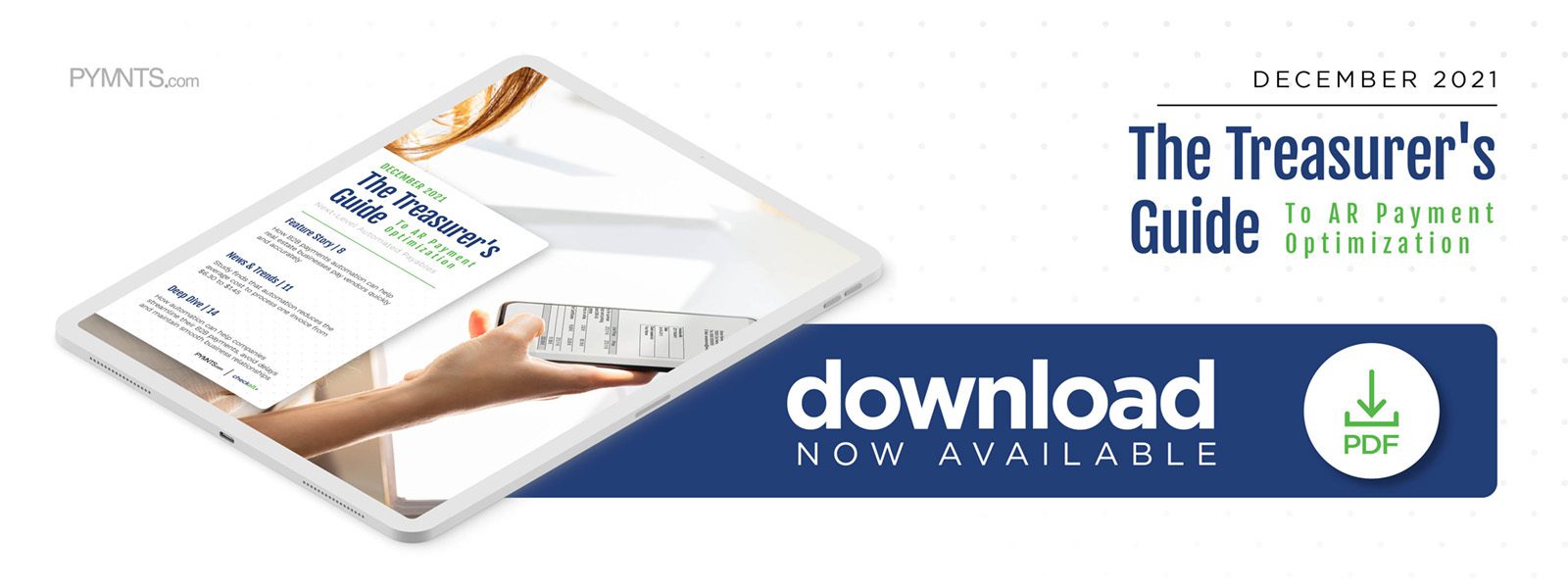Deep Dive: How Automation Can Accelerate And Improve AP And B2B Payments

Businesses of all sizes and types must handle B2B payments, including the smallest craft shops purchasing needles and thread and technology titans buying materials to build microchips en masse.
B2B payments total $25 trillion each year in the U.S. and $120 trillion globally, and these figures are expected to grow in coming years as the world’s economy exits the pandemic-related downturn.
These massive sums belie the everyday challenges accounting departments face when making and receiving B2B payments, however. Delays are commonplace, with the average payment term clocking in at 27 days even though companies take an average of 34 days to actually make payments. Of B2B payments collected by small- to medium-sized businesses (SMBs) in the U.S. last year, 57% were late, and 17% of these payments were received 30 or more days after their due dates.
These delays can result in crippling cash flow issues and cause downstream effects, including late payroll and inaccurate accounting processes. Automating payables and invoicing procedures could reduce many of these delays, however. This month’s Deep Dive explores why B2B payments are regularly delayed, explains the impact these delays can have on day-to-day corporate operations and details how automation can accelerate and enhance these payments.
Businesses Face AP Challenges
The pandemic has been a game changer for the accounts payable (AP) space as it has forced employees to work from home in record numbers and adjust many of their processes to match. One report found that 97% of AP departments said they were affected by the shift to remote work, with 28% reporting an “extraordinary” or “significant” impact. It found that 53% of businesses had to change how and when suppliers were paid, which largely meant significant payment delays.
Payment delays can irreversibly harm supplier relationships. In a survey, 73% of United Kingdom procurement professionals said their late payment practices have damaged supplier relationships. Meanwhile, 59% of suppliers that had been paid late reduced or halted discounts, and 62% said they were withholding goods or services until buyers paid their invoices. More than half of buyers said a supplier refused to work with them again as a result of those late payments.
Additional complications can arise from businesses’ continued reliance on paper-based payments. The share of B2B payments being made via paper check dropped sharply from 81% in 2004 to 42% by the end of 2019, but a PYMNTS study conducted last year found that 81% of firms still used paper checks to pay other businesses at least occasionally. While it is not feasible for many businesses to forgo check use entirely, paper payments and the manual data entry that often accompanies them can cause errors and delays that further damage supplier relationships.
There is a potential solution in the form of payables automation, however. Reducing the potential for human error and tardiness via automation can significantly improve businesses’ bottom lines even as they continue to process paper-based payments.
Leveraging Automation to Solve Payables Problems
Payables automation could play a critical role in minimizing payment delays and errors by delegating day-to-day processes such as collections and invoicing to artificial intelligence (AI)-aided solutions. These solutions can significantly reduce the capacity for error and accelerate complex calculations that are often considered tedious for human accountants. Studies project that half of all B2B invoices across the globe will be issued, processed and paid without any human intervention by 2025, in fact, reflecting the sweeping changes that automation is expected to bring to the space.
Automation can take various forms, but one of the most promising is intelligent document processing (IDP). Invoices can arrive in a dizzying array of formats and files, and the time and energy spent assessing and processing these documents can create significant delays in businesses’ payables departments. IDP systems leverage AI-aided optical character recognition programs to extract and process data regardless of format, much as a human would read and transcribe letters on a page — only much faster. These IDP programs can automate every step of the payables process, saving human accountants untold hours and supercharging their productivity.
The IDP market was valued at $762 million last year but is projected to experience a compound annual growth rate (CAGR) of 35% to reach $6.8 billion by 2027, indicating its potential for use in a wide range of industries. Businesses that invest in this technology could, in turn, see significant revenue growth as they reduce payment errors and speed up payment times, making IDP and other invoice automation procedures a top priority in the future.

